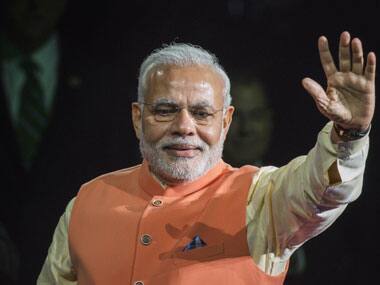The Narendra Modi-led BJP’s near total control of the country’s political space marks a clear break from the political arrangements and equations of the past. While it’s too early to declare that the Nehruvian construct of India is dead, it is clear that more than six decades after Independence the Indian electorate is convinced that that the Congress need not be a constant in its life. The bigger story in the election results over the last few years though is the collapse of the ‘Congress system’. The BJP’s ascendance signals the beginning of a time of churn, flux, realignment and re-thinking in Indian politics. Here’s a look at how things stand now and how they are expected to shape up in coming days. The ‘Congress system’ is finally over: It means the days of the Congress or parties sharing the Congress’s outlook towards matters governance, ideology, internal leadership and running the party organisation are set to be eclipsed by a new order. A whole lot of parties in states are entities born out of the Congress and have a similar worldview as the Grand Old Party. The worldview is getting rejected across the country. Logically, the parties should go. [caption id=“attachment_1767495” align=“alignleft” width=“380”]  Prime Minister Narendra Modi. Reuters[/caption] Reversal of roles: The BJP now occupies the political space the Congress held for close to six decades. With all political competition virtually decimated in important states and the Congress not expected to stage a dramatic recovery, the party is set to have a long stint in power with other parties ganging up against it in different formations in different states from time to time. Race to occupy the opposition space: As the results in the general elections and the assembly polls over the last two years reflect, no opposition exists for the BJP in electorally critical states. Since politics abhors a vacuum, there would be competition among non-BJP parties to capture the opposition space. We could have entered a phase of furious activity involving splintering of parties, voluntary merger and aggressive takeover before the new opposition takes final shape. Ideological rebranding: This follows from the earlier point. The Narendra Modi-led BJP has set the agenda, now others have to follow. All other parties will be forced to do a drastic re-think on ideology and upgrade to keep in touch with the times. All of them look similar when it comes to political mindset and they need to re-invent and re-position themselves in the political space to stay distinct. The churn is expected to deliver interesting results. The BJP’s Right wing ideology may find its challenge in the redesigned ideology of the Left. The era of the decisive mandate: The country is tired of coalition governments, both at the Centre and the states. The decisive mandate for the BJP in major states and even for regional players such as the Trinamool Congress, the Biju Janata Dal in Odisha and the Samajwadi Party in Uttar Pradesh indicate that the electorate is no more prepared to accept the uncertainties thrown up by unstable governments. Voters would rather bet big on one party than allow their votes get scattered among several contenders. People are tired of regional parties: The trend of big regional parties seems to have run its course and the idea of the big national party is making its way back. People are tiring of regional parties and their self-limiting existence. The massive jump in the BJP’s vote share vis-a-vis regional parties in the general elections and the assembly election reflects the new trend. Of course, there have been big wins for the regional parties in the last couple of years, but wherever the challenge has been strong from a national party they have faltered. No place for identity politics: Identity-based parties are on the way out. The performance of the Shiv Sena, and more specifically, the MNS in Maharshtra and Haryana Janhit Party are pointer to the new reality. These parties with their limited agenda have outlived their utility and have no space in a changing, mobile India. The diminishing appeal of such parties have to do with their inability to formulate an agenda beyond parochialism. Their votes are likely to be usurped by bigger parties with more inclusive agenda.
The BJP’s ascendance signals the beginning of a time of churn, flux, realignment and re-thinking in Indian politics. Here’s a look at how things stand now and how they are expected to shape up in coming days.
Advertisement
End of Article


)
)
)
)
)
)
)
)
)



